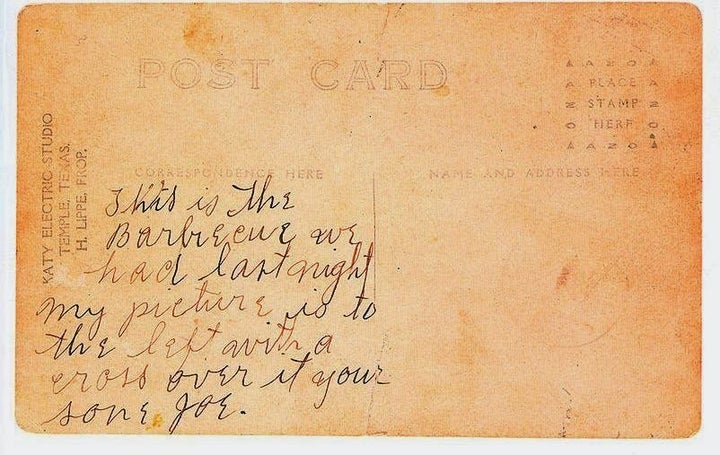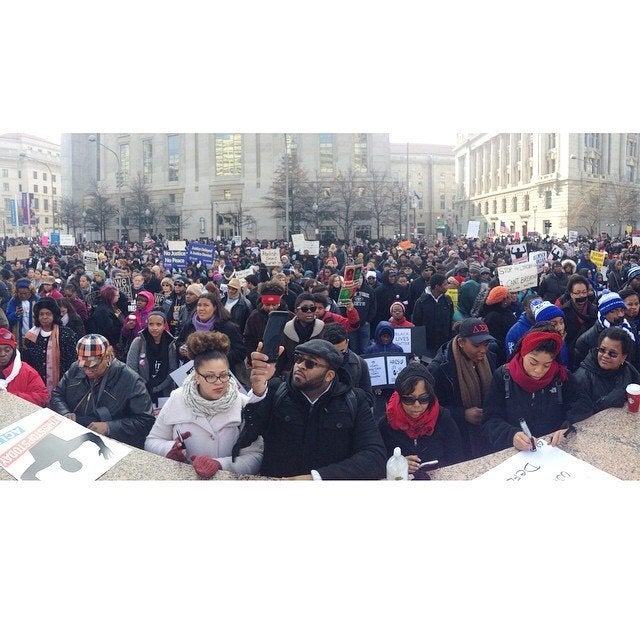In 1955, Mamie Till-Mobley, the mother of Emmett Till, famously insisted on an open casket for the funeral of her 14-year-old son. The young boy had been so brutally beaten by two white men in Mississippi ― for, according to them, acting “inappropriately” around a white woman ― that he was completely unrecognizable to family and friends. His face was disfigured, swollen and misshapen, with one eye gouged out and dangling from the socket, and a gunshot to the head.
“I wanted them to see,” Till-Mobley said of her decision. “I wanted the world to see what they did to my baby.”
They say seeing is believing. The images of Emmett Till’s battered body were plastered all over newspapers and magazines in 1955, just as the Civil Rights movement was beginning to gain steam. Seeing the image of his body, grasping the reality of his death, should have been enough to shift the American consciousness, for people to acknowledge that racism is not only real but deadly, that the lives of black people were under a constant threat every day. But it didn’t. And it still doesn’t.
Today, images of black death are all about spectacle. With every shaky cameraphone video and every blurry dashcam clip of another black person senselessly killed at the hands of the police, who are supposed to protect them, the indignity of black death in America comes into sharper and sharper focus. 136 black people have been killed by police this year alone. Alton Sterling. Philando Castile. Two more black men killed in about as many days, their final moments forever captured on cameraphones.
Their stories have gained traction because of the visceral and disturbing videos of their deaths, deaths that echo so many others over the last year that have barely been acknowledged. But what will seeing videos of these men do? Will it make those in power believe that this is an epidemic? Will it make the system change? And if not, is it truly worth it?
The realities of racism, the gritty aftermath of it, should not be sanitized. Social media and camera phones have become an important aid in activism, tools for capturing the violence and the protests that it sparks. But something that must be acknowledged is the complications that come along with these tools. Because even as these videos and images spread the word, they also spread the dehumanization of black people and black bodies.
In the day since he was killed, images of Alton Sterling’s death have filled Facebook timelines and Twitter feeds. His last moments, edited for quick consumption, have been played over and over again on 24-hour news channels. And on Wednesday, the New York Daily News tweeted its front page, a large, garish photo of Sterling lying dead on the ground. The headline: HIS HANDS WERE EMPTY.
Again, the complexity. Sterling’s story on the cover of a major newspaper is necessary and important. People need to know what happened, need to understand the severity of the situation. But what’s the story, really? Is it truly about the injustice of Sterling’s death, or is it just about the spectacle of it?
As so often is the case in the death of black people, Sterling’s body is used for shock value, to get eyeballs and to sell papers. There’s something so incredibly sad about this. There’s a long history in this country of black lives and black death being used for economic gain. This situation is no different.
In the telling of these stories, there’s an uncanny disregard for the actual humanity of the people who died. News outlets and social media users alike share and exchange these images like collector’s cards, devoid of context. Think of the image of Michael Brown laying dead on a Ferguson street for hours. Think of Eric Garner gasping for his last breaths. It’s a paradox: these videos had to be filmed and shared in order for people to even talk about these men’s deaths, to spark the debate and conversation and protests that we always hope will effect change.
But then change doesn’t come, and another black person is killed, and we share the shocking images of their deaths, and we plead for people to see and believe, and we pray for justice, which rarely, if ever, comes. We repeat the process. Meanwhile, the hashtags and bodies pile up, they begin to blur, one video of a black man laying in the middle of the road dying can be interchanged for another, bits of their identity and humanity are chipped away every time the moment of their death is streamed, and even in death they are not afforded privacy, and dignity, because their deaths must always mean something.
But what’s the point of representing the horrors of racial injustice if your killer is not forced to pay for his crime? Why must black people, even in death, take on the burden of meaning when it becomes clearer and clearer that our deaths mean nothing but click-baity headlines and intentionally incendiary front page pictures?
There’s a famous photo of a young black boy named Jesse Washington, taken in May of 1916. It’s a black and white photo, blurry, but still clear enough to show the smiling faces of a crowd of white onlookers in the background. In the foreground is Washington, 17-years-old. He is hanging from a tree. His body is a charred, mangled mess. He is a lump of melted flesh: burned, castrated, beaten and hacked up. This image, a record of the extremes of human cruelty, was sold on postcards, a celebration of the public lynchings of black bodies. It was sent to friends and family across the United States with messages on the back like:
“This is the barbecue we had last night. My picture is to the left with a cross over it. Your son, Joe.”

This postcard is what the aftermath of black death is in America today. This is the height of the humiliation. It has become morbid entertainment, no different than a “barbecue,” a picnic, or a freak show oddity. From the lynchings of the Jim Crow era to the police killings of today, it’s not just the senseless killing ― it’s the record of it, the images recycled over and over again of hanging and bleeding and shot to death black bodies that seem to blur, that become one person, or rather, no person at all.

